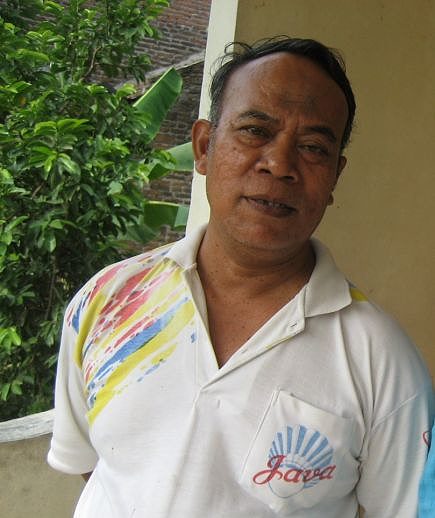Despite being a scene of destruction and heartache, there is a strange beauty in the new landscape created in the wake of the Sidoarjo mud disaster.
Siobhan Campbell
In October 2007 my partner, Jumaadi, and I travelled to Sidoarjo, East Java to celebrate the end of the fasting month with Jumaadi’s family. Located to the south of Surabaya and previously well known for producing some of the best krupuk (prawn crackers) in Indonesia, since May 2006 the name Sidoarjo has become synonymous with the mud disaster that began when a gas well, managed by the company PT Lapindo, exploded. Developments with the disaster management and the handling of displaced persons are a frequent topic of conversation in ‘Lumpur Lapindo’ (Muddy Lapindo), as Sidoarjo is now known locally. We were even served a cake jokingly called kue lapindo (lapindo cake), a round white sponge with a brown centre.
Early one morning we drove motorbikes to Porong, a town on the main road connecting Surabaya to Malang at the centre of the mud disaster. We rode all the way around the dam wall which has been constructed in an attempt to contain the hot water and mud flow.
Pak Asmadi |
We visited Pak Asmadi, a retired railway employee whose home is located on the train line in Porong. Last time we visited in February 2007 he had been considering leaving the area. About two months after we were there the train tracks were covered in hot mud, temporarily disrupting the Malang-Surabaya service. However, after being offered compensation of only 20 per cent of the value of his home he has decided to stay put. The money on offer would not be enough to relocate elsewhere.
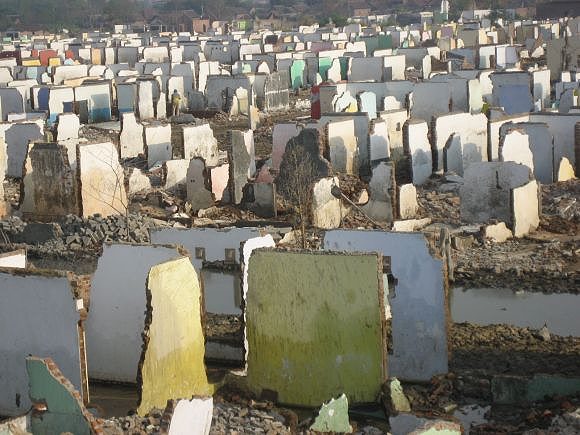 |
The displaced |
The endless rows of empty houses in this abandoned housing estate hint at the huge number of displaced. Eerily quiet, the only sounds were the tapping of hammers as small teams of workers removed salvageable parts of the former homes. Bricks, woodwork and tiles were piled up on the side of the road ready for resale.
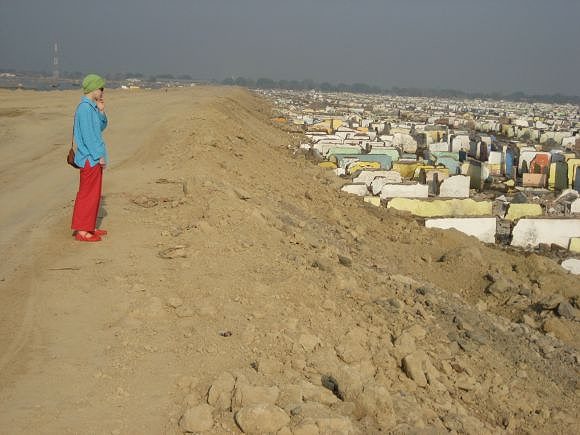 |
Edge of the mess |
Standing on the dam wall which has been constructed to control the mudflow. On one side the ruins of the housing estate are visible whilst on the other, in the distance, is the lake of muddy water. Men from a local village told us most people were now too scared to go down amongst these houses because people had been killed by collapsing walls when searching for important documents.
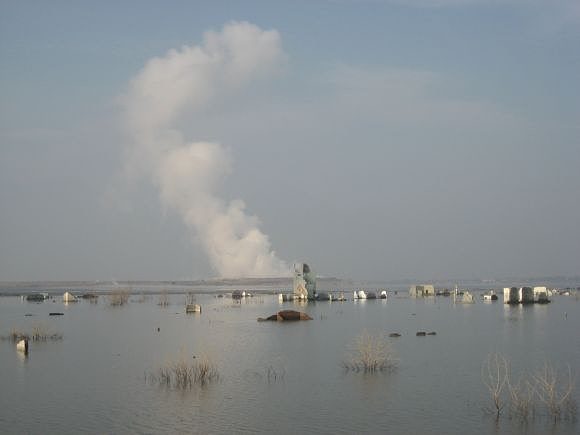 |
Submerged village |
Only the taller buildings and tree tops from this village are still visible. The white smoke from what was the centre of the gas explosion billows in the background.
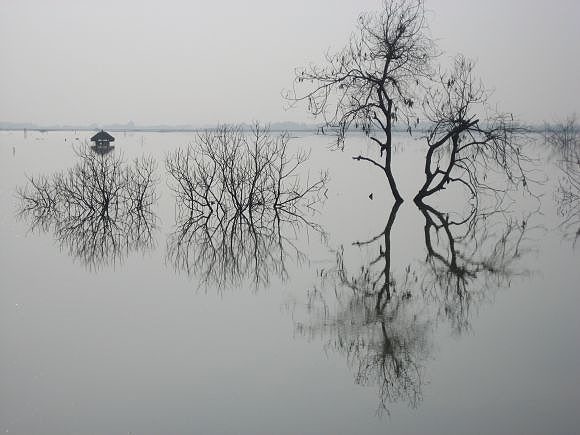 |
A serene stillness |
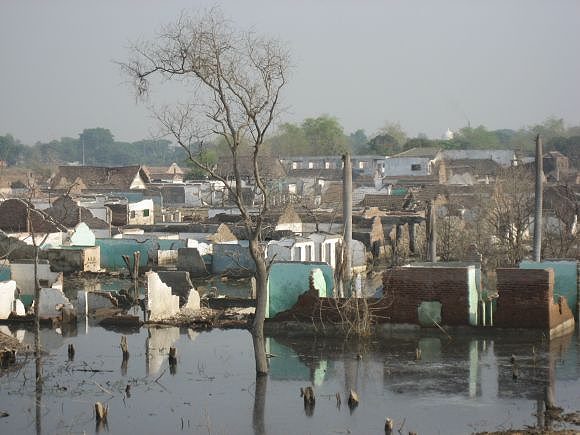 |
The wet remains |
The top of a mosque peeks out from the water. As well as homes, mosques and factories, the affected area also contains cemeteries. Only wealthier community members could afford to exhume grave sites and relocate the deceased.
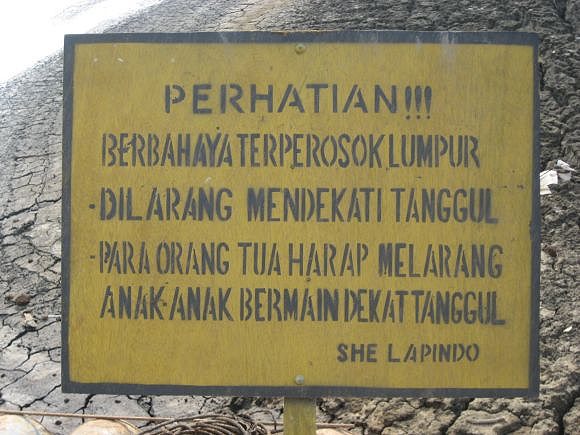 |
Just another tourist site |
A sign warns visitors not to go near the dam wall and reminds parents not to let their children play in the mud. Although it looks harmless, there is a strong smell of sulphur and the mud is black and oily to touch.
On the weekends curious visitors travel from places like Surabaya and Malang to see the site. Tour buses and cars cannot travel beyond the main road at Porong. Visitors wanting to go around the dam wall make use of the motorcycle hire service provided by entrepreneurial locals. When a man approaches touting DVDs it’s easy to forget you’re at the scene of a disaster and not just at another Indonesian tourist site. ii
Siobhan Campbell (siobhanlc@hotmail.com ) and Jumaadi live in Sydney. Jumaadi was born in Sidoarjo and is a Masters of Fine Arts candidate at the National Art School, Sydney. Siobhan is an Indonesian language translator/interpreter. They travel to Sidoarjo frequently and have established a cultural centre, Rumah Budaya Pecantingan, which runs workshops and performances for local children and visitors.
All photo credits: Jumaadi/Siobhan Campbell

